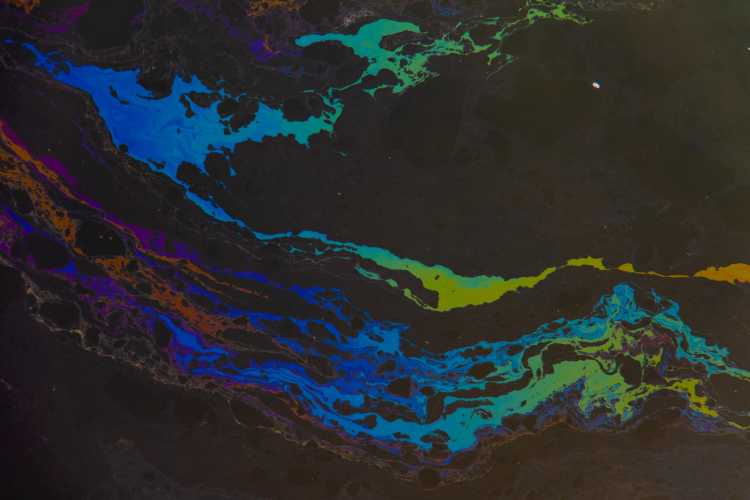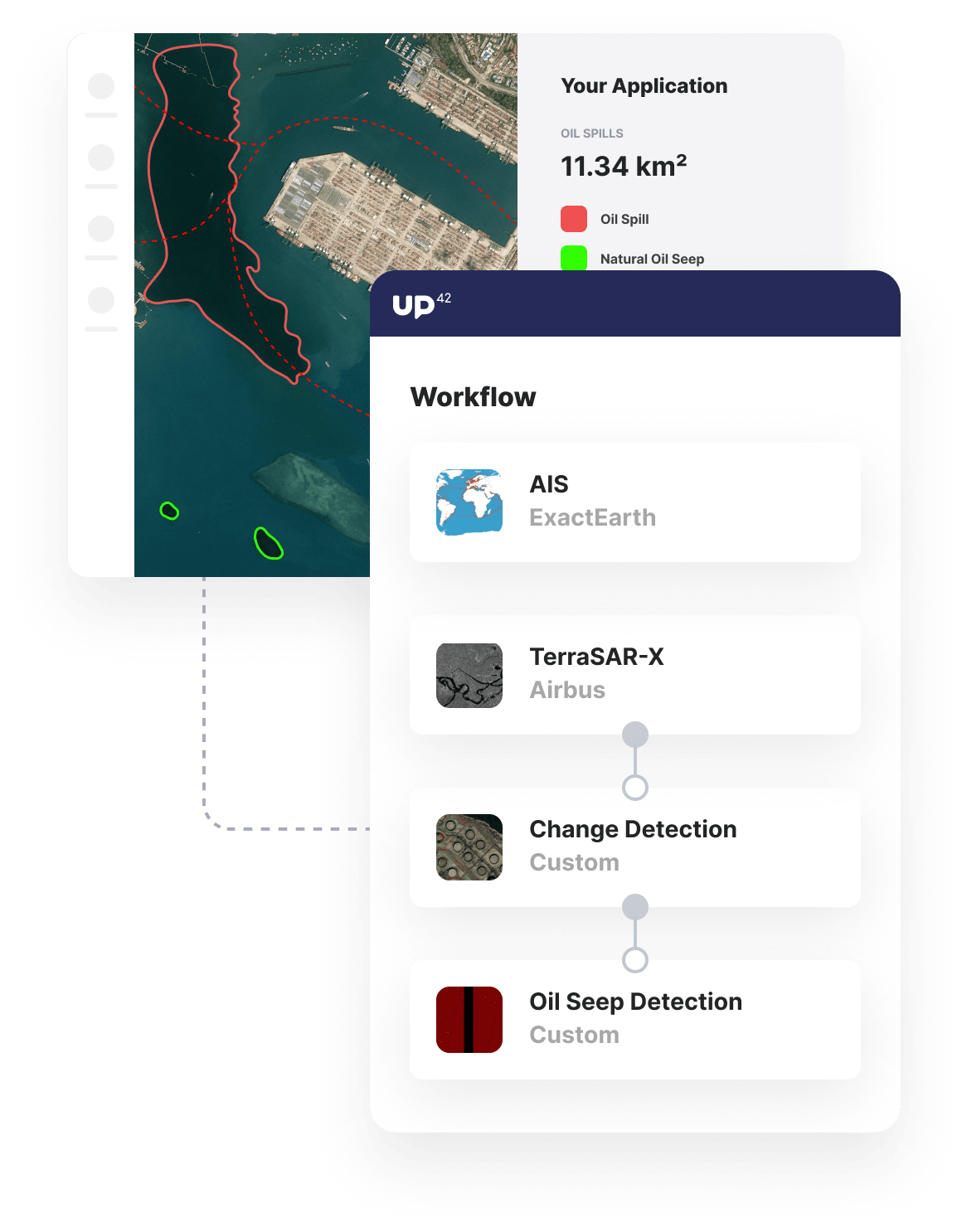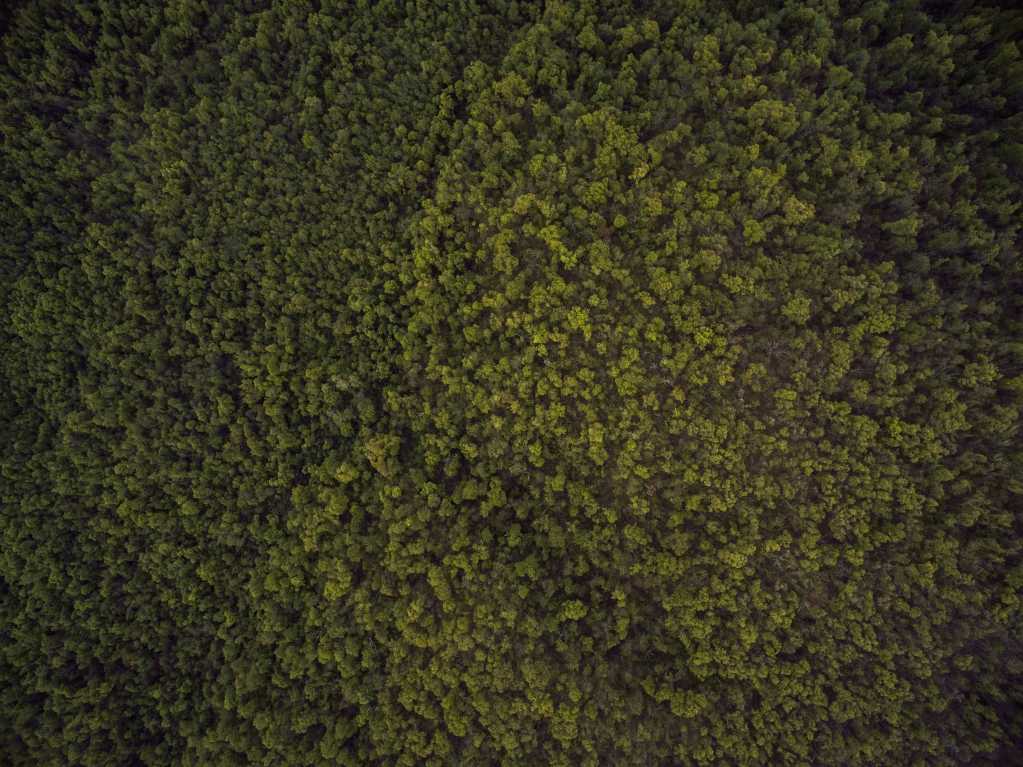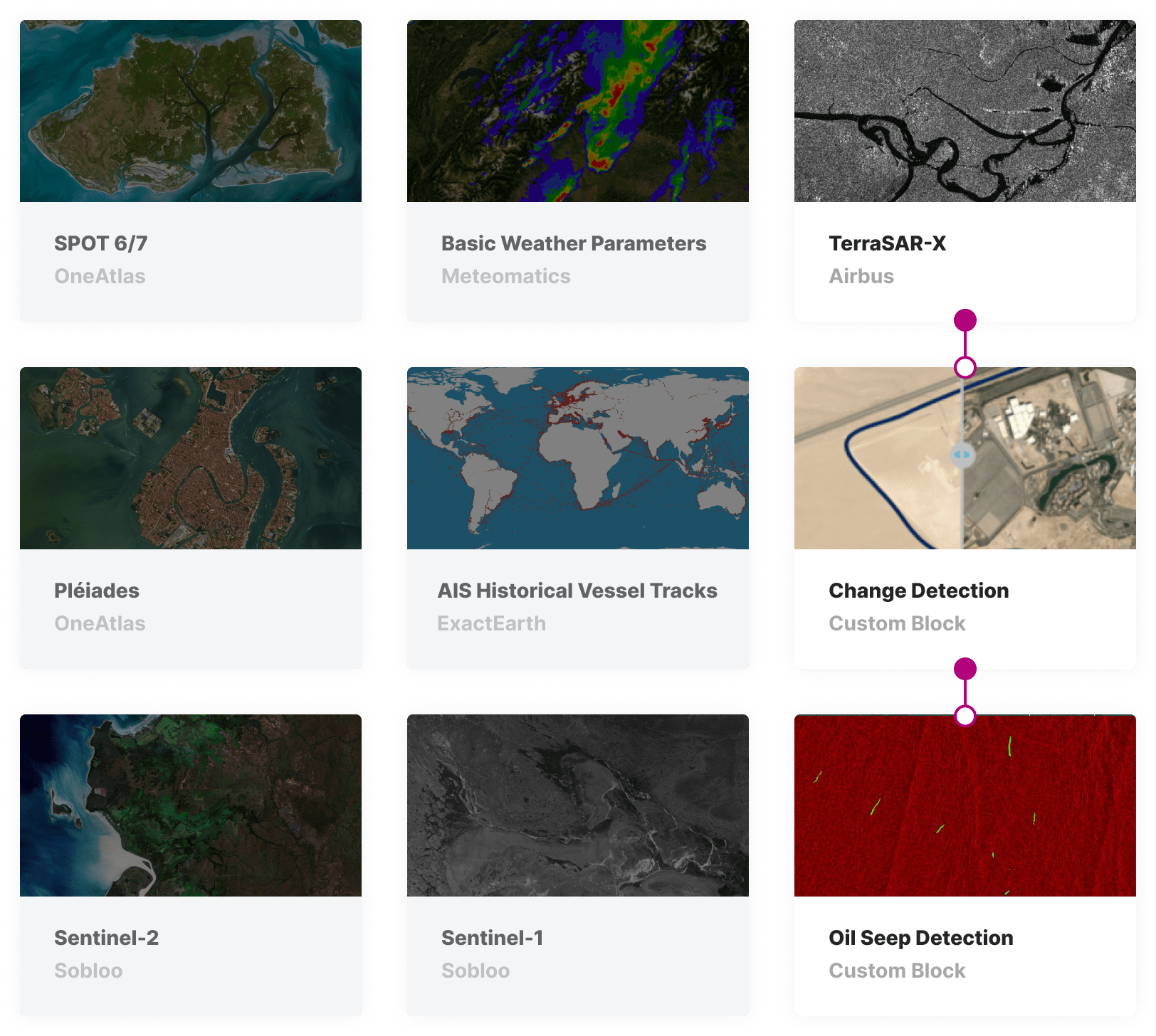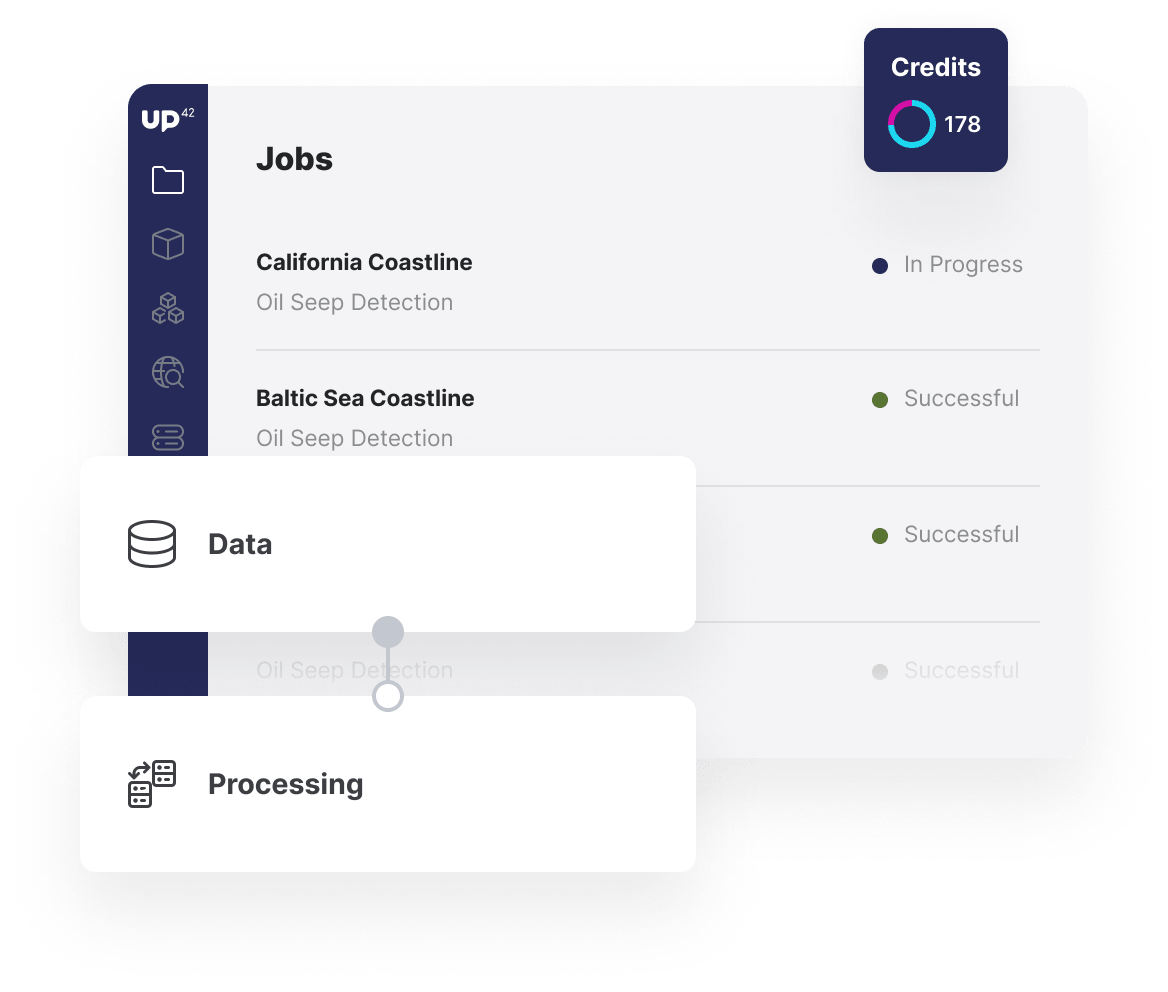TerraSAR-X and AIS data
Leverage a vast archive library of SAR data, with both TerraSAR-X and Sentinel-1 imagery. Augment the imagery with industry-leading AIS data from exactEarth.
Ocean-surface oil detection
Use change detection algorithms on historical SAR imagery to identify all the areas in which oil is present on the ocean surface.
Oil slick vs. natural oil seep
Use AIS data over time to identify shipping lanes and ascertain when the presence of oil is related to ships and when it is due to natural oil deposits under the ocean floor.
